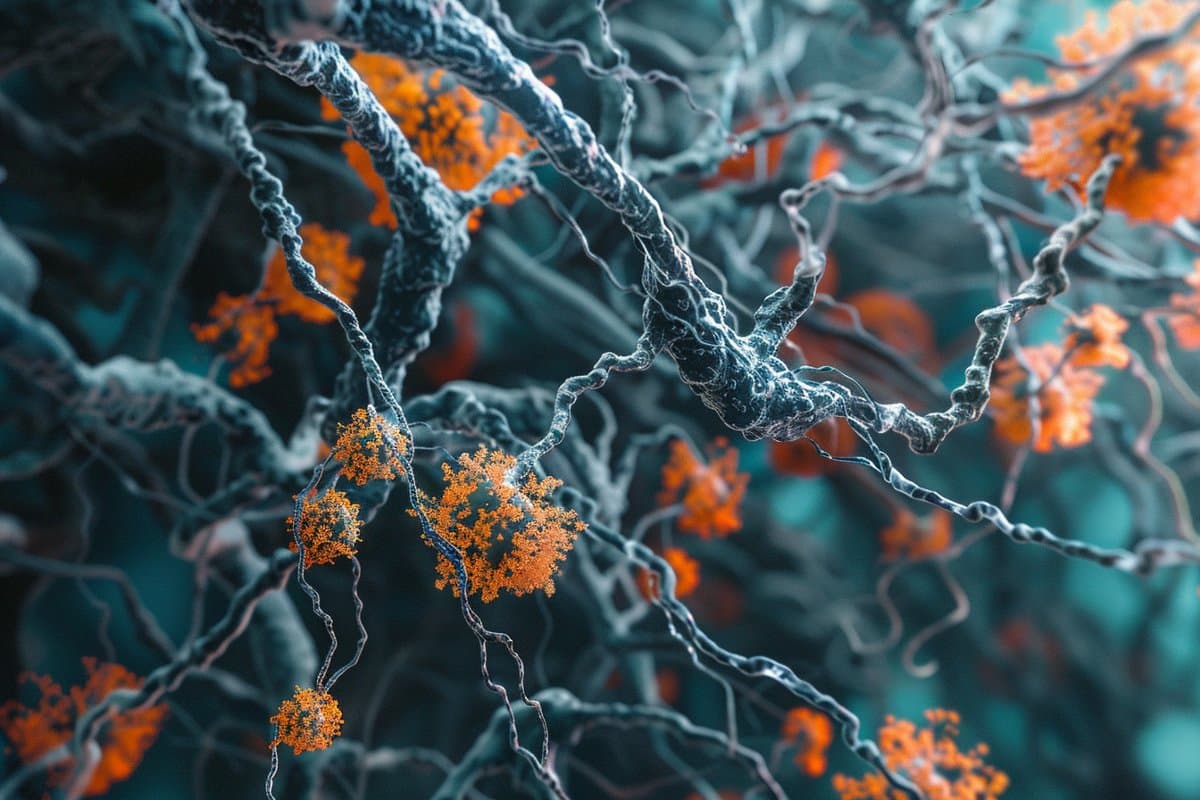Summary: Researchers have made significant discoveries in understanding the mechanisms behind protein accumulation in neurodegenerative diseases such as Alzheimer’s disease. Studying fruit flies, the team found that a reduction in mitochondria within neuron axons directly leads to the accumulation of this harmful protein.
They identified an increase in the protein eIF2 as a key factor; reducing its levels restored protein recycling and improved neuronal function. The breakthrough provides new targets for treatments for diseases such as Alzheimer’s and amyotrophic lateral sclerosis, potentially improving patient outcomes.
Key facts:
- Research shows that the depletion of mitochondria in neuronal axons leads to abnormal accumulation of proteins, a hallmark of diseases such as Alzheimer’s.
- The researchers found that increases in the protein eIF2 are a key factor in this process; adjusting its levels can reverse the effects.
- These findings from genetic studies of fruit flies open the door to the development of new treatments that could target mitochondrial health or modulate protein levels to combat neurodegenerative diseases.
source: Tokyo Metropolitan University
Researchers at Tokyo Metropolitan University have discovered how proteins assemble abnormally in neurons, a feature of neurodegenerative diseases such as Alzheimer’s disease. They used fruit flies to show that depletion of mitochondria in axons can directly lead to protein accumulation.
At the same time, significantly larger amounts of a protein called eIF2 were also discovered. Returning levels to normal results in restoration of protein recycling. These findings hold the promise of new treatments for neurodegenerative diseases.
Every cell in our body is a busy factory, where proteins are constantly being produced and broken down. Any changes or mistakes in the production or recycling stages can lead to serious illness. For example, neurodegenerative diseases such as Alzheimer’s disease and amyotrophic lateral sclerosis (ALS) are known to be accompanied by abnormal accumulation of proteins in neurons. However, the triggers behind this accumulation remain unknown.
A research team led by Associate Professor Kanae Ando of Tokyo Metropolitan University has been trying to determine the cause of abnormal protein accumulation by studying fruit flies, a commonly studied model organism that shares many key similarities with human physiology.
They focused on the presence of mitochondria in axons, the long tendril-like appendages that extend from neurons and form the necessary connections that allow signals to travel within our brains. Mitochondrial levels in axons are known to decrease with age and progression of neurodegenerative diseases.
Now, the research team has discovered that the depletion of mitochondria in axons has a direct impact on the accumulation of proteins. They used genetic modification to inhibit the production of Milton, a key protein for mitochondrial transport along axons.
The study found that this led to abnormal levels of protein in Drosophila neurons, the result of a breakdown in autophagy (the recycling of proteins in cells). Through proteomic analysis, they were able to identify a significant upregulation of eIF2, a key subunit of the eIF2 protein complex responsible for initiating protein production (or translation).
The eIF2 subunit was also found to be chemically modified. Both problems hinder the healthy functioning of eIF2.
Importantly, by artificially inhibiting eIF2 levels, the team found that they could restore lost autophagy and restore some neuronal function that had been damaged by axonal mitochondrial loss. This not only suggests that depletion of mitochondria in axons leads to abnormal protein accumulation, but that this occurs through upregulation of eIF2.
As the population ages and the prevalence of neurodegenerative diseases continues to increase, the team’s findings are a crucial step toward developing therapies to treat these serious diseases.
funds: This work was supported by a Sasakawa Grant-in-Aid for Scientific Research (2021-4087), a Takeda Science Foundation, a Hoansha Foundation grant, a research award from the Japan Foundation on Aging and Health, and the Novartis Foundation for the Advancement of Science (Japan), with Challenging Research Science Research Grant (Exploratory) [JSPS KAKENHI Grant Number 19K21593]NIG-JOINT (National Institute of Genetics, 71A2018, 25A2019) and TMU Social Engagement Strategic Research Fund.
About this neurological research news
author: Totsukawago
source: Tokyo Metropolitan University
touch: Totsukagawago – Tokyo Metropolitan University
image: Image via Neuroscience News
Original research: Open Access.
“Axonal distribution of mitochondria maintains neuronal autophagy during aging through eIF2” by Kanae Ando et al. electronic life
Abstract
Mitochondrial axonal distribution maintains neuronal autophagy during aging through eIF2
Neuronal aging and neurodegenerative diseases are accompanied by a breakdown in proteostasis, and the cellular factors that trigger it have not yet been identified.
Impaired mitochondrial transport in axons is another feature of aging and neurodegenerative diseases.usefruit flywe found that genetic depletion of axonal mitochondria leads to translational dysregulation and protein degradation.
Mitochondria-deficient axons exhibit abnormal protein accumulation and autophagy defects. Reducing neuronal ATP levels by blocking glycolysis does not reduce autophagy, suggesting that autophagy defects are related to mitochondrial distribution.
Through proteosome analysis, we found that eIF2 is upregulated through depletion of axonal mitochondria. Phosphorylation of eIF2, another subunit of eIF2, is reduced, and global translation is inhibited.
Neuronal overexpressionIntrinsic factor 2Phenocopies autophagy defects and neuronal dysfunction and reducesIntrinsic factor 2Expression rescued those perturbations caused by axonal mitochondrial depletion.
These results suggest that the mitochondria-eIF2 axis maintains proteostasis in axons and that its disruption may underlie the development and progression of age-related neurodegenerative diseases.
#insights #protein #accumulation #Alzheimers #disease #Neuroscience #News
Image Source : neurosciencenews.com
